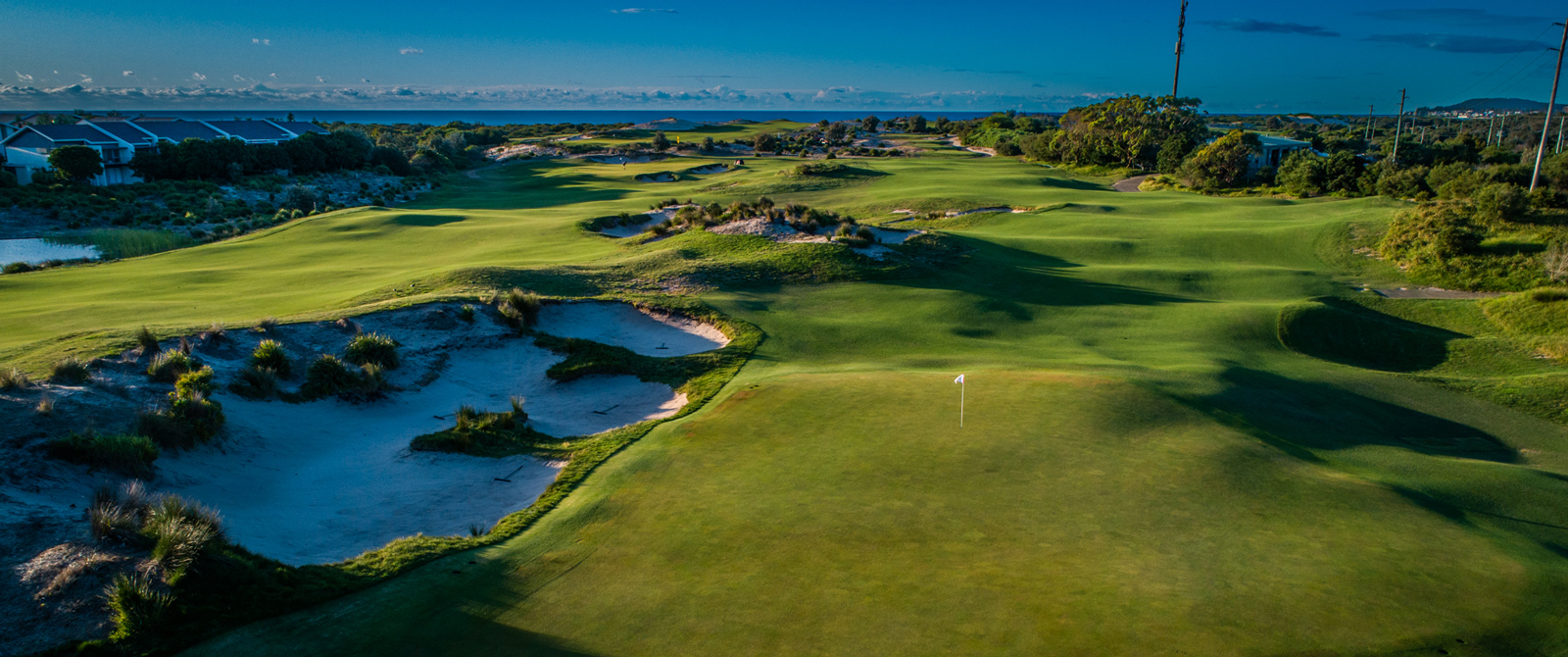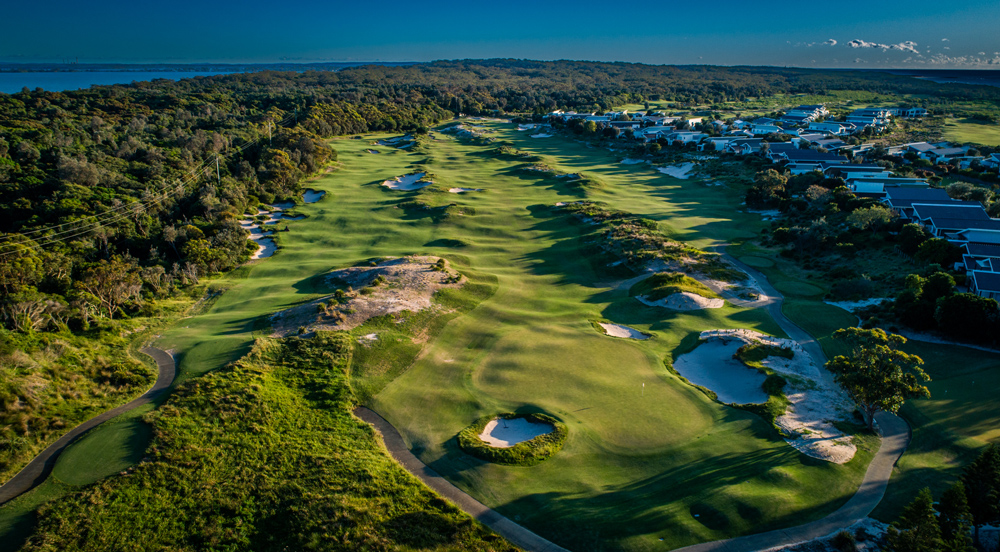
ABOUT
Magenta Shores Golf and Country Club is a golf course and resort located on the NSW Central Coast. The 18 hole golf links course was designed by course architect Ross Watson and is set between the ocean, lake and the Wyrrabalong National Park.
HISTORY – THE STORY BEHIND THE COURSE
The construction of Magenta Shore’s Ross Watson-designed 18 holes is the perfect testament to how a golf course can not only improve the environment, but also provide great pleasure to the senses.
Rated by Golf Australia & Golf Digest as one of Australia’s best, Magenta Shores links course is set amongst some of the most inspiring and unspoilt surroundings on a pristine peninsular between Tuggerah Lake and the Pacific Ocean just a 90-minute drive from Sydney.
During his inspection in the early 2000s, Watson recognised the sites’ wonderful undulating profile and how the majority of the site covers all sand, which offered a blank canvas to get really creative with the bunkering and green sites.
“I have been waiting for a site like this since I first began designing golf courses 30 odd years ago,” said course designer Watson.
Viewing the site of the challenging par-72 course today, more than 11 years on, it’s hard to imagine that every dune, every bump and hollow is, in fact, man made. You could easily get fooled into believing the course has been in the ground for decades.
The outstanding result can be best described as sensory overload, and in years since Magenta Shores opened for play the layout has been able to maintain its presence among the top layouts in the country, and with expectations to continue its climb up the rank.
Spectacular bunkering, rolling terrain combined with ever-present coastal sea breezes, the course will linger in the memories of even the most discerning of golfers.
The course also boasts impressive practice facilities, consisting of putting greens, a warm-up driving range and chipping green with bunkers.
Become a member and enjoy the many benefits this excellent club offers; join colleagues for a corporate group day for 9 or 18 holes, experience the invaluable coaching from our Golf Professionals; or Stay & Play, enjoying the coastal Links course and overall ambience that is Magenta Shores.
Where did the name Magenta come from?
When renowned course designer Ross Watson first laid eyes on the piece of land which our magnetic course is now built upon, he said it was “the ideal ‘canvas’ on which to create a truly sensational course.”
Beautifully located on the beachfront in Magenta Shores NSW, with its rolling landscape, coastal dunes and tranquil National Park, it truly is a stunning location for a golf course. But where does the name Magenta really come from?
It turns out; it literally originates from its spectacular surroundings.
Magenta is a relatively new area to be developed for residence, with the suburb being first recorded in 1991. The name originates from two parts of its local environment – the flora and the color of the sky.
The Magenta Lillypilly, or Syzygium paniculatum, is a small sized rainforest tree with a total population of around 1,200 plants spread across a 400 km stretch of coastal NSW. The tree is listed ‘Endangered’ in the area and ‘Vulnerable’ nationally, and is currently part of a national recovery plan.
The Magenta grows bright pink, spherical or egg-shaped, edible fruit which makes delightful cordial and desserts and is also used as a natural color additive for a light sauce.
The Colour Magenta, or The Colour of Universal Harmony & Emotional Balance, is a colour that is variously defined as purplish-red.
The colour was first introduced as the colour of a new aniline dye called fuchsine, patented in 1859 by the French chemist François-Emmanuel Verguin. Its name was changed the same year to magenta, to celebrate a victory of the French and Sardinian army at the Battle of Magenta on June 4, 1859.
In spirituality, the colour magenta is one of universal harmony and emotional balance and is said to help create harmony and balance in every aspect of life; physically, mentally, emotionally and spiritually.

